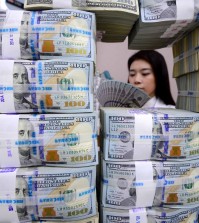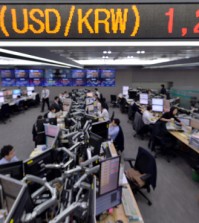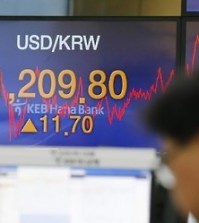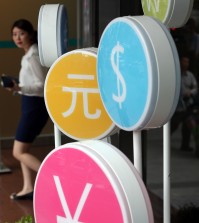- California Assembly OKs highest minimum wage in nation
- S. Korea unveils first graphic cigarette warnings
- US joins with South Korea, Japan in bid to deter North Korea
- LPGA golfer Chun In-gee finally back in action
- S. Korea won’t be top seed in final World Cup qualification round
- US men’s soccer misses 2nd straight Olympics
- US back on track in qualifying with 4-0 win over Guatemala
- High-intensity workout injuries spawn cottage industry
- CDC expands range of Zika mosquitoes into parts of Northeast
- Who knew? ‘The Walking Dead’ is helping families connect
Won may rise to 1,000 per dollar
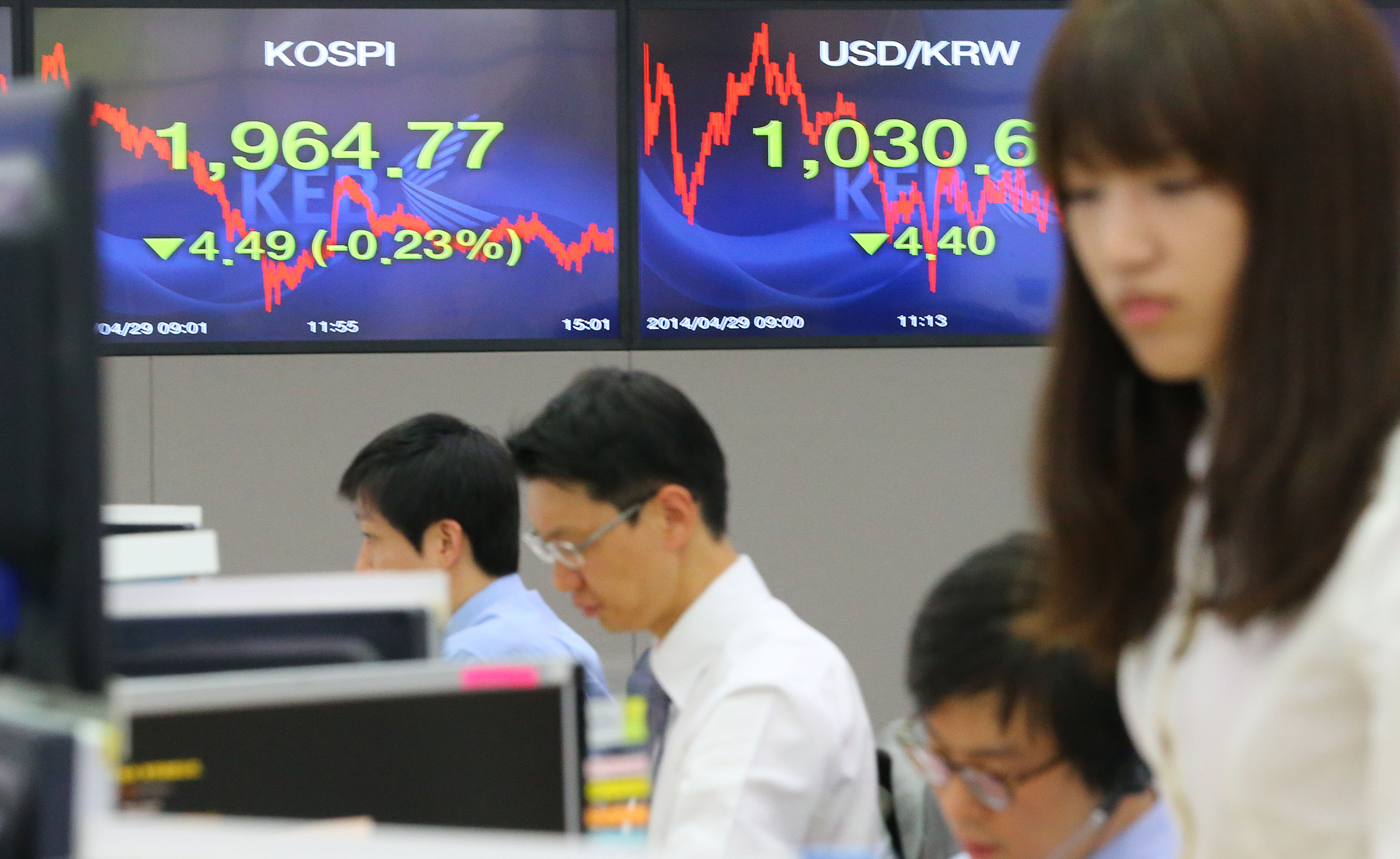
On Tuesday, the local currency ended at 1,030.6 won to the U.S. dollar, the strongest since Aug. 8 in 2008 at 1,027.9 won. It slightly fell to 1,033.2 won Wednesday. (Yonhap)
By Kim Rahn
The Korean won is expected to rise to 1,000 won against the U.S. dollar in the coming months on the back of a rising current account surplus powered by robust exports, according to analysts, Thursday.
They said that strong purchasing of Korean stocks by foreign investors will support the strengthening of the local currency.
On Tuesday, the local currency ended at 1,030.6 won to the U.S. dollar, the strongest since Aug. 8 in 2008 at 1,027.9 won. It slightly fell to 1,033.2 won Wednesday.
The won gained 3 percent against the dollar for the last month, from 1,064.7 won on March 31 to 1,033.2 won on April 30.
It was the fastest appreciation among major emerging market currencies, followed by the Brazilian real’s 2.1 percent, Turkish lira’s 1 percent, new Taiwan dollar’s 0.9 percent, Thai baht’s 0.4 percent and Malaysian ringgit’s 0.2 percent, according to the KDB Daewoo Securities.
“Korea had a current account surplus for 25 months and the trend is likely to continue, bringing the dollar into the country and pushing up the value of the won,” said researcher Son Eun-jung at Woori Futures.
Analysts say the won is likely to remain strong for the time being.
Economist Jeon Seung-ji at Samsung Futures said, “Exports are usually on the upswing in May and June, so an inflow of the dollar is expected. The Bank of Japan also has a chance of additional easing, and then foreign funds will flow into Korea.”
She said that the won may appreciate gradually to 1,000 won against the dollar by June.
“But in that case, the financial authorities will try to prevent the 1,000-won level from breaking,” she said.
Son expected the rate to go to 1,020 won by May.
They said the U.S. Federal Open Market Committee meeting was held from Tuesday to Wednesday local time, but the committee decision was in the expected path and may not have a big impact on the exchange market.
Park Sung-wook, director at the Korea Institute of Finance, said the dollar remains weak in the global market.
“Global market situations and the U.S.’ monetary policy are decisive factors for the won-dollar rate. The market expects the U.S. may not raise interest rates soon, and such expectation brings the dollar into Korea, making the won strong,” he said.
“If the Fed starts detailed talks about interest hikes, it will prevent the won from getting stronger. But for now, such talks are unlikely,” Park said.
Jeon agreed, saying, “The stronger dollar following the U.S.’ economic recovery is a factor depreciating the won. But the upswing in exports is an appreciating factor.”
Concerns are that the strong won will hurt Korean exporters.
According to a survey conducted by the Korea Trade Insurance Corp. on 387 exporters in January, small companies said the bottom limit of the won-dollar exchange rate for their minimum operating profits was 1,057 won per dollar, and large firms, 1,050 won.
Analysts said that the bottom limit may differ according to each company and each industry, but more appreciation of the won will be a pressure for exporters in general.
“For small companies that cannot hire their own foreign exchange experts, government agencies need to provide them with consulting for the issue,” said Hyundai Research Institute researcher Kim Min-jung.







